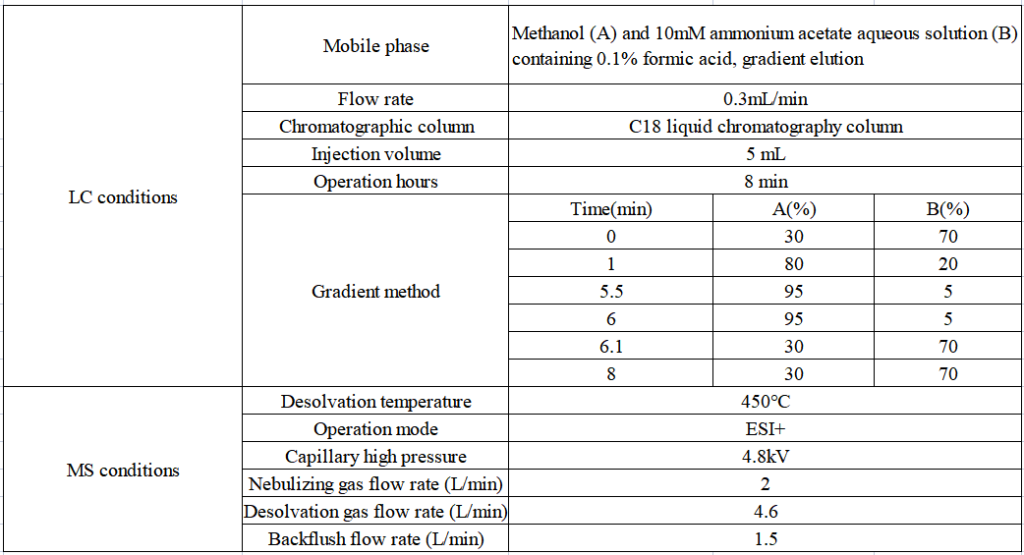Alkylphenols and alkylphenol polyoxyethylene ethers are often used in textiles, leather, paper, pesticides and other fields due to their good penetration, emulsification, solubilization and washing effects, but the disadvantage is that they are not easy to degrade and will Disrupt normal hormone levels in the body. In 2021, the "Environmental Protection Comprehensive List" issued by the Ministry of Ecology and Environment will list alkylphenol polyoxyethylene ethers as high-pollution and high-environmental-risk products . According to "GB/T 23322-2018 Determination of Alkylphenols and Alkylphenol Polyoxyethylene Ethers of Textile Surfactants", alkylphenols (AP) include octylphenol (OP) and nonylphenol (NP), APnEO Including nonylphenol ethoxylate (NPnEO) and octylphenol ethoxylate (OPnEO). According to this standard, the application center has established a rapid detection method for the determination of 2 kinds of alkylphenols and 28 kinds of alkylphenol polyoxyethylene ethers in textiles using ultra-high performance liquid chromatography-triple quadrupole tandem mass spectrometry . With good repeatability, it can effectively monitor the contamination of alkylphenols and alkylphenol polyoxyethylene ethers in textiles.
Keywords: LC-MS/MS, chemicals, textiles, alkylphenols, alkylphenol ethoxylates, surfactants, GB/T 23322-2018
Experimental part
Instrument
Table 1 Liquid chromatography tandem triple quadrupole mass spectrometer

Table 2 Detection parameters of liquid chromatography tandem triple quadrupole mass spectrometer-APnEO

Table 3 Detection parameters of liquid chromatography tandem triple quadrupole mass spectrometer-AP

Reagents and Standards
Reagents: mass spectrometry grade formic acid (CNW), mass spectrometry grade ammonium acetate (CNW), chromatography grade methanol (Merck);
Pure water: 18.2 MΩ·cm deionized water (25°C);
Standards: octylphenol, nonylphenol standard (Tianjin Alta); APnEO standard (Tianjin Alta).
For sample pretreatment, refer to "GB/T 23322-2018 Determination of Alkylphenols and Alkylphenol Polyoxyethylene Ethers of Textile Surfactants".
Linearity and Detection Limits

Figure 2 TIC diagram of APnEO (0.5 μg/mL )
Table 4 Detection limit and quantification limit of APnEO


Figure 2 TIC diagram of AP (0.5 μg/mL)
Table 5 Detection limit and quantification limit of APEO

Test Results

Epilogue
In this paper, the linearity, precision and sensitivity of the determination of alkylphenols and alkylphenol polyoxyethylene ethers in textiles are investigated. The results show that: 2 kinds of alkylphenols and 28 kinds of alkylphenol polyoxyethylene ethers have good linearity in the detection range , the correlation coefficient r is greater than 0.995, the precision of the method is within 8%, and the linear correlation coefficient r and sensitivity of the standard curve all meet the requirements of national standards . Using the LC-MS/MS system with high sensitivity and high anti-pollution ability, sensitive and accurate quantitative detection of alkylphenols and alkylphenol ethoxylates in textiles can be carried out.
Appendix
Equipment and Consumables Solutions
1. EXPEC 5210 configuration details

2. Standard products


